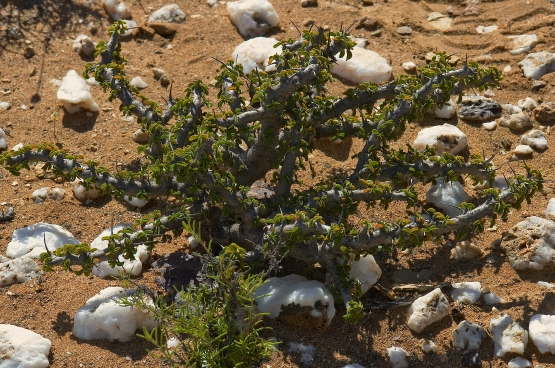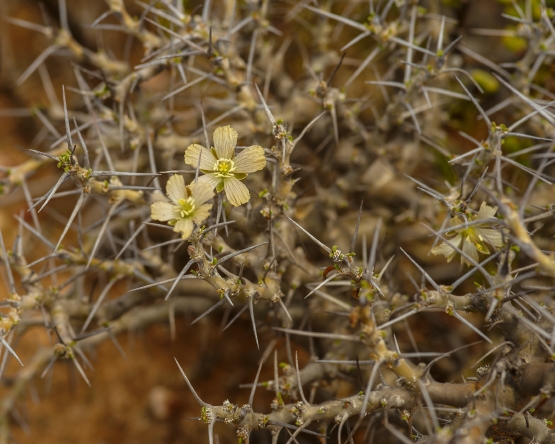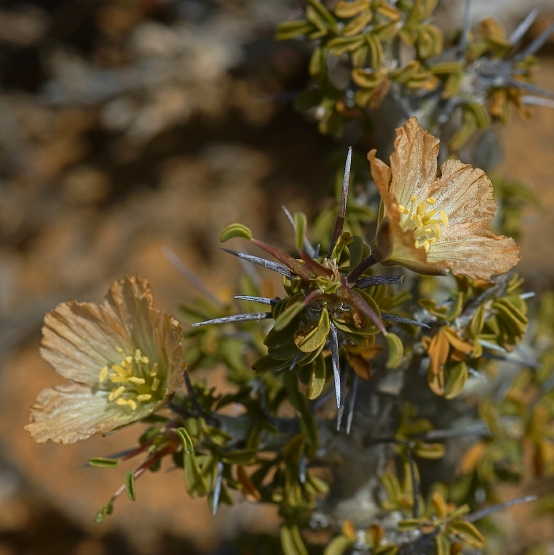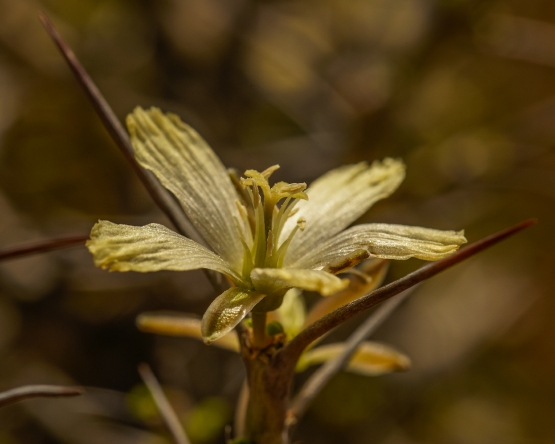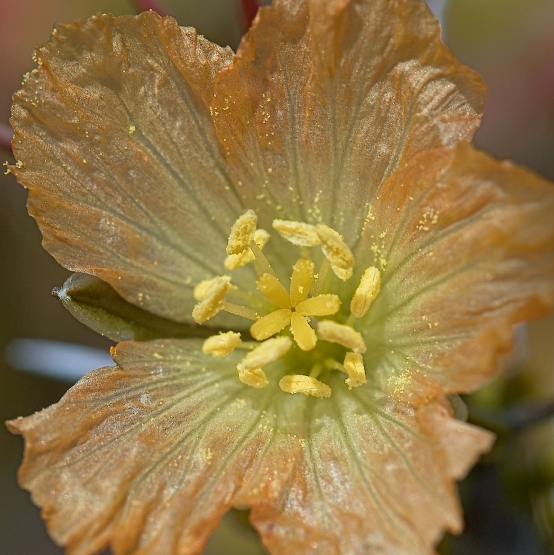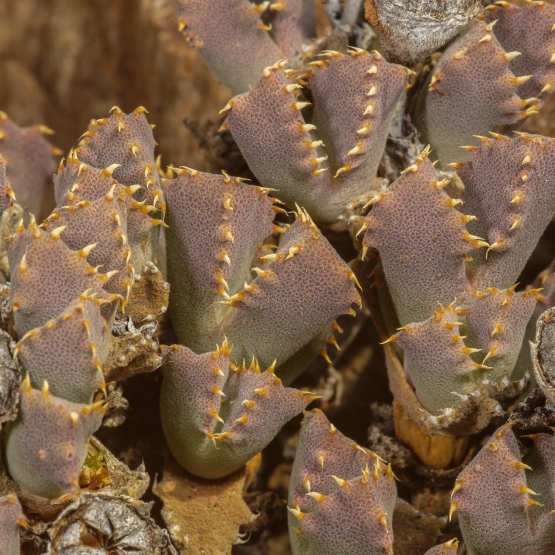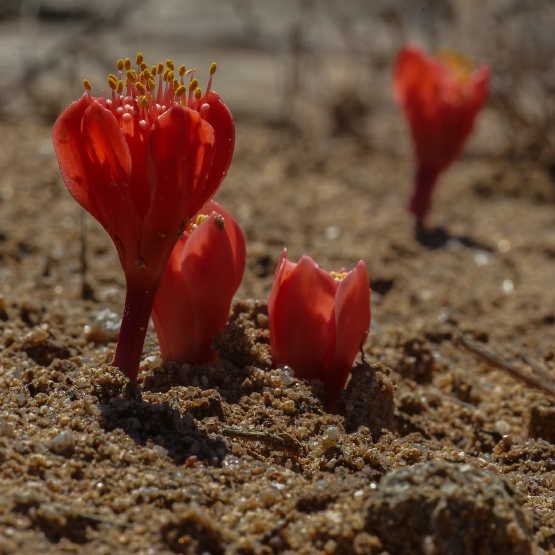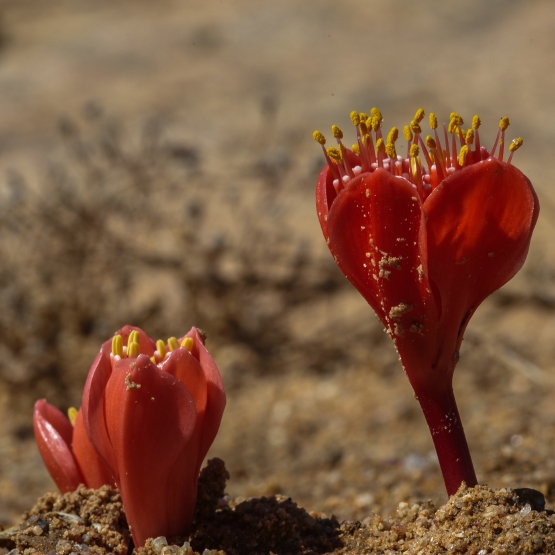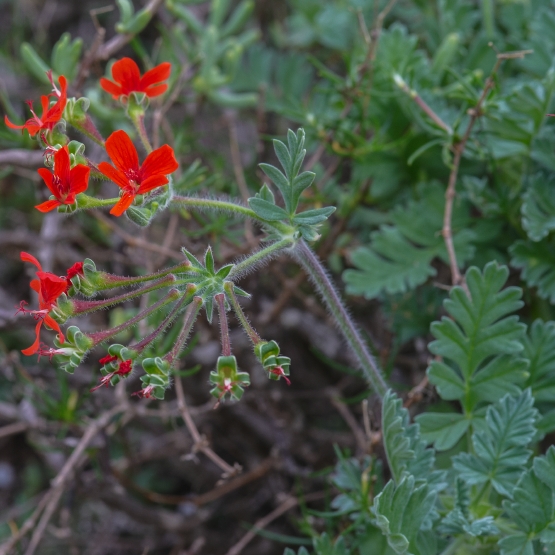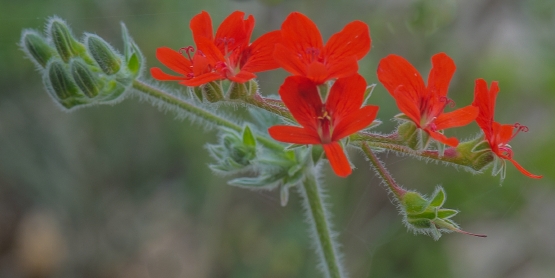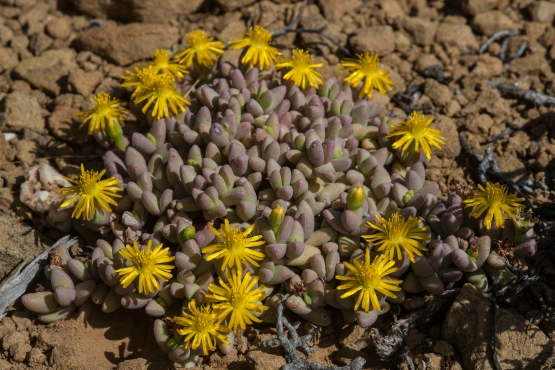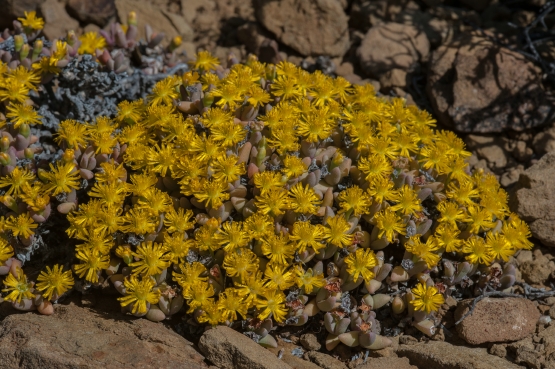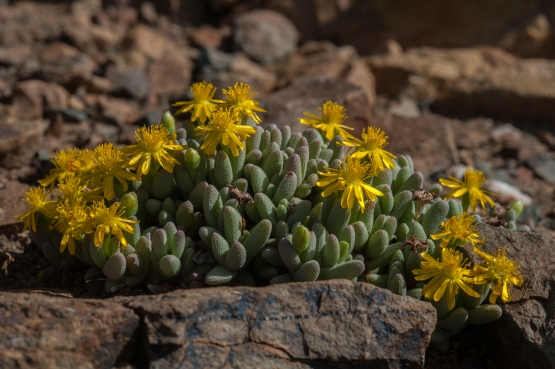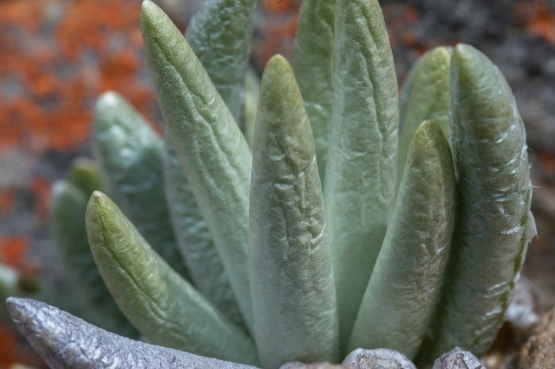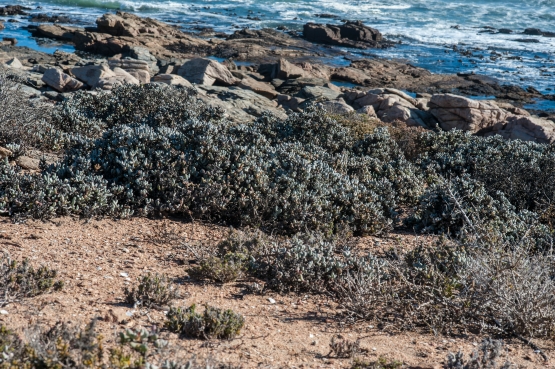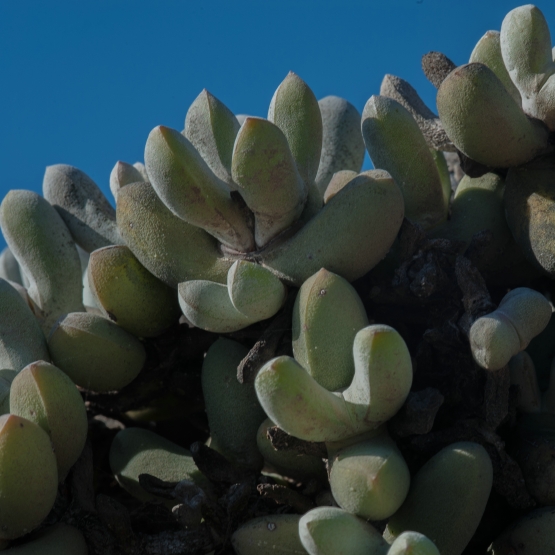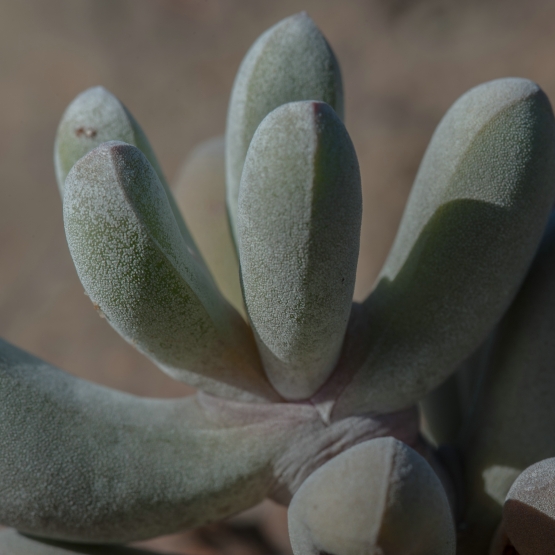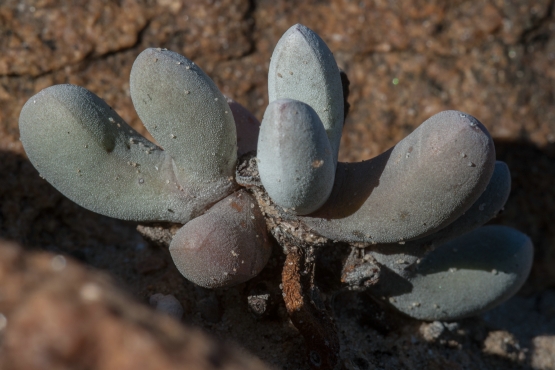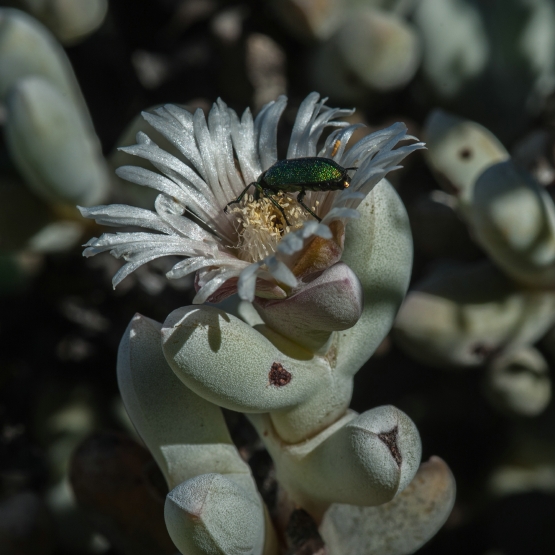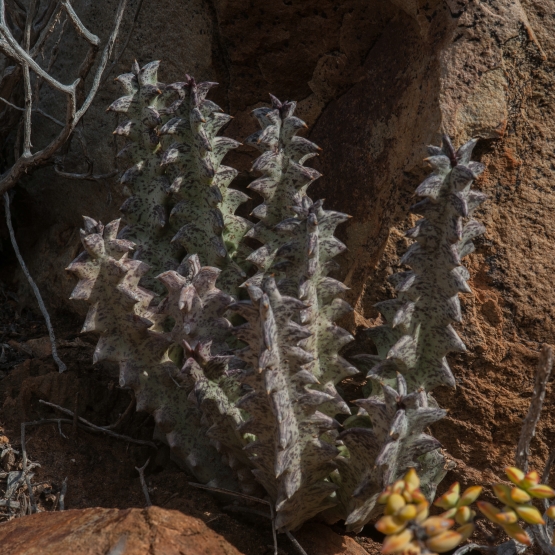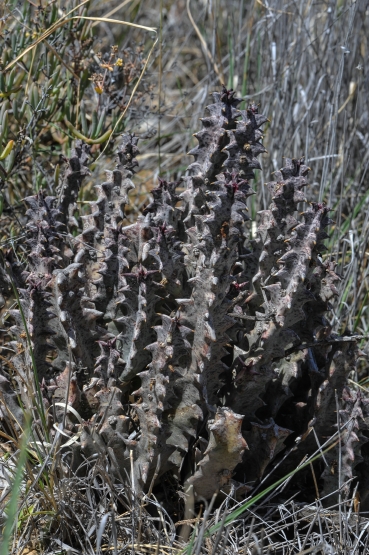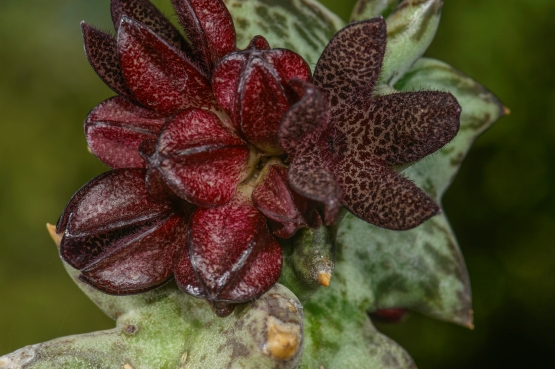It is about one and a half week ago now that my most recent post appeared. It was rather an eventful period here, to put it mildly. It started when my wife was run down by one of the dogs, resulting in a hip replacement last Friday. Fortunately she is back home now again.
In the same period my C: drive started to pack up after not much more than 1.5 years of use. As most of you will know, installing a hard drive per se is not a big deal, but after this you are left with a lot of problems: missing programs, software that suddenly needs an activation code you cannot find etc., etc. When it was found out that the motherboard also did not work properly, the whole circus started all over again. I’d rather be in the field looking for plants, but that will have to wait for a while, I’m afraid.
Anyway, now you know the reason why, if my posting should be a bit erratic for some time.
Month: August 2013
Monsonia salmoniflora (= Sarcocaulon salmoniflorum)
It is always a bit sad when a name that you have known for many years, is replaced by another one. This is even more so if the old name had a certain appeal to you, e.g. because it sounded nice or had a meaning that made it easy to remember. Some of these name changes are unavoidable as they are the result of following the nomenclatural code. In other cases it is more a matter of opinion, so much so that one sometimes wonders what the value of the new name really is. Probably better not to open this can of worms here.
In 1996 the genus Sarcocaulon was included in the genus Monsonia based on molecular studies and it seems that the new arrangement has been more or less generally accepted by now.
M. salmoniflora forms shrublets up to 40 cm tall and is widely distributed in Namibia and South Africa. The plants flower mainly in Oct.-Dec. The flowers are up to 3 cm across with colours ranging from pink to orange.
Odontophorus marlothii
Haemanthus crispus
Yeah, yeah, I know this is not a succulent, but as most succulentophiles like other plants as well, I decided to smuggle this one in for a change. If you don’t like what you see, you can just move on.
This bulbous plant occurs abundantly throughout Namaqualand from Steinkopf southwards to the Olifants River.
The photos were taken between Garies and Hondeklipbaai on 31 March 2012. The beautifully undulated leaves are usually present from March till October.
Pelargonium fulgidum
Rhinephyllum graniforme
Here is an example of how knowing the meaning of the name actually may help to recognise the species. (Rhinephyllum = leaf like a file, referring to the rough surface of the leaves; graniforme = shaped like a grain). The genus occurs from Laingsburg in the Western Cape northeastwards to the southern tip of the Free State.
The flowers are rather special in the sense that they open only late in the afternoon or in the evening.
Photographed east of Prince Albert 3 Nov. 2012.
Senecio scaposus
This species is found sporadically from Montagu eastwards to the Eastern Cape, usually on rocky outcrops. The leaves are covered in silvery grey felt, protecting the plant against desiccation.
The first picture was taken southwest of Ladismith, the second one northwest of the same town and the last one at the foot the Rooiberg near Calitzdorp.
Wooleya farinosa
The genus Wooleya has never had more than one species, which is rather uncommon.
The plants occur only on the sandy coastal plains of Namaqualand near the sea, where there is regular fog. They become up to half a meter tall and up to 70 cm in diameter. The leaves look as if they are covered in flour (farinosa means just that).
Photographed at Hondeklipbaai, 31 March 2012.
Quaqua pillansii
It seemed appropriate to devote this first post from my new home to a plant that was first discovered near Montagu. Nowadays it is known to be widely distributed from just south of Ceres to the area north of Port Elizabeth. In a genus where most plants look rather dull when not in flower, this is probably the most handsome. It is a robust species, forming shrubs of almost half a meter tall and even more in diameter. (The only Quaqua that is occasionally bigger is Q. mammillaris). In spite of their size, the plants are not always very easy to find. The shape and mottling of the stems provide a nice camouflage.
The two plants in habitat were photographed in early November at the northern foot of the Rooiberg pass near Calitzdorp. The flowering plant is a cultivated one.
Online again
After just over two weeks, Telkom has seen fit to connect me to the Internet again. Thank you, thank you.
Last week they sent a technician to restore my telephone connection and today they sent another one to do the ADSL part. It must be wonderful to have a monopoly, especially on such a vital component of modern life. As their “valued customer” you can moan and groan as much as much as you want, but in the end you just have to accept what is thrown at you. Anyway, all is well that ends well. Or so they say.

